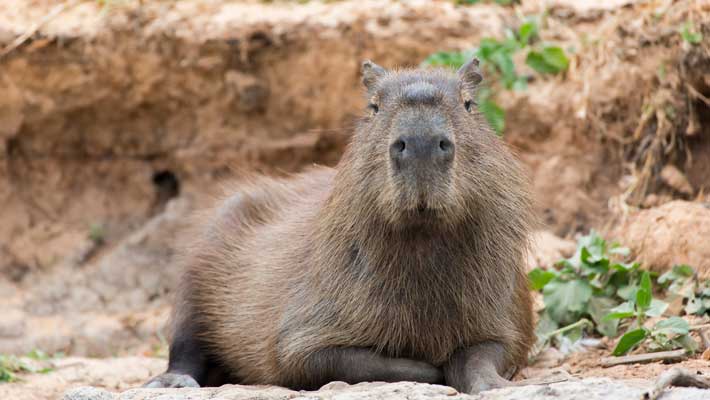Where to find us
Taronga’s Capybaras can be found at Map Reference 9I from Saturday 28 September 2019. Their new habitat has a combination of open grassed areas for grazing, larger trees to provide shade, a sticky, gooey mud wallow for cooling off and a large water feature for swimming.

Did you know?
- Capybaras are the largest living rodents on earth and are related to the guinea pig. Female capybaras are bigger than the males and can reach weights of over 60kg!
- The capybara is a semi-aquatic mammal with webbed feet and can dive and stay underwater for up to five minutes at a time.
- Charismatic capybaras like to express themselves and communicate by purring, barking, cackling, whistling, squealing, whining, grunting and teeth-chattering. This symphony of sounds has harmonic differences among social groups with each sound delivering a different message and meaning.
- Capybaras are coprophagous, meaning they eat their own poo! This is a great source of bacterial gut flora, to help digest the tough grasses they love to munch on. Eating faeces also helps to extract the maximum protein and vitamins from their food.
- Capybaras regurgitate their food to chew it again and again. Like a camel they chew from side to side not up and down.
- Like other rodents and rabbits, the front teeth of capybaras grow continually to compensate for the constant wear from eating grass. Their cheek teeth also grow continuously.